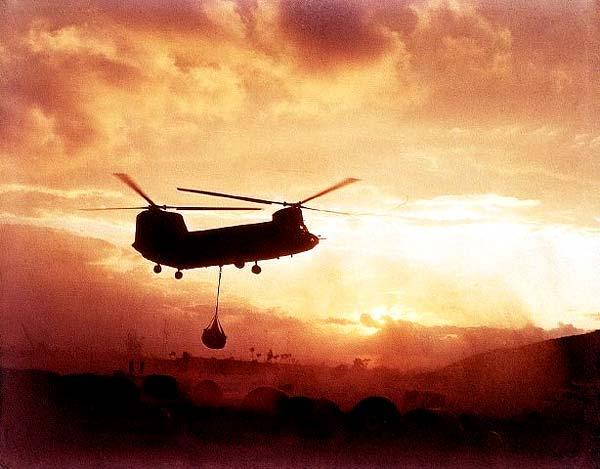 |
| CH-46 Helicopter |
|
|
U.S. Marines are generally assault forces. Traditionally they traveled aboard navy ships where they could be sent ashore to deal with trouble Americans might have with foreign nations. During World War II, they fought almost exclusively in the Pacific Theater of the war. In this war they perfected the technique of the amphibious landing, that is, landing on the beach from the sea and moving inland to defeat the enemy and take control of an island. Vietnam, however, provided a different challenge. While the Marines made some amphibious landings, they didn’t engage the enemy on the beach. In fact, when the Marines first landed in northern South Vietnam in 1965 their mission was primarily to defend critical areas (airfields for instance) against attack by the VC or NVA. As more Marines arrived in South Vietnam, they took on a more offensive role. The northern part of South Vietnam contains a lot of jungle-covered mountains. The Marines soon learned that the most efficient way to transport troops from a base camp to an area where the enemy had been spotted was by helicopter. Although a variety of helicopters were used, those used most often were cargo helicopters and gunships. Cargo helicopters ferried both troops and supplies from one place to another. An example is the CH-46, which has a large tube-shaped body with rotors on both the front and rear. Near the front, machine guns are mounted on both sides where machine gunners on the crew can provide covering fire if the troops being transported needed to be rescued from a battle in the field. The gunship is a helicopter specially designed to attack the enemy. An example is the Cobra. It carries a crew of two and delivers a stream of bullets from its machine guns or grenades from its grenade launcher. The gunships usually accompanied the cargo helicopters when the trip involved entering an area where the cargo helicopters might draw enemy fire.
Artillery played an important role also. The big guns were placed at various locations within the Marines area of responsibility where they could support troops engaged with the enemy in the field. These locations were called Fire Support Bases. Air support was available also. Jets from an aircraft carrier or from an air base in South Vietnam flew missions in support of the ground forces, often delivering bombs or napalm, a chemical, which can spread and burn a large area. At times long-range bombers would fly missions to South Vietnam from Okinawa and deliver heavy bombardment known as “Arc Light”. Since the “hit and run” tactics used by the communist forces rarely resulted in major battles, the Marines usually had to look for the enemy. Infantry units would sweep through an area trying to find enemy soldiers and destroy any weapons or supplies the enemy might have stashed away. In order to make these operations more successful, Marine leaders used a specially trained group of Marines called Reconnaissance Marines.
|
|